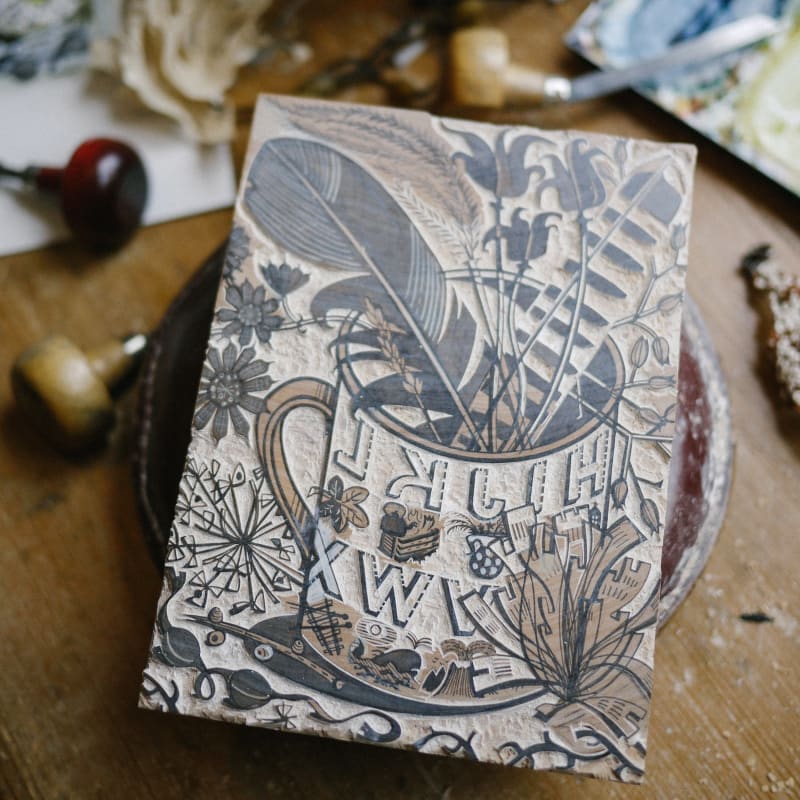The centuries-old art of wood engraving is an exquisitely detailed form of relief printmaking typically known for its small scale and fine line work.
With the Society of Wood Engravers' 86th Annual Exhibition upon us, we have delved a little deeper into the wood engraving process, as well as a few other forms of relief printmaking, to give you an insight into how artists of the Society of Wood Engravers' members create their works!
Firstly, what is an 'original print'?
Before we begin, it is important to make sure you know exactly what we mean by 'original print'. The term can be a confusing one, not helped by the frequent use of the word ‘print’ when referring to mass reproductions. Put simply, an original print is an image that has been transferred by hand from one surface to another.
Still confused? Be sure to read our article 'Printmaking Techniques Explained: What exactly is an original print?' if you feel you need to be brought up to speed before reading any further.
What is a relief print?
Now, onto the relief printing process. In relief printing, the artist draws a design on a smooth block of material, using tools to carefully carve away the areas that are not to be printed. The block's uncut surface is inked using a dabber or a roller, and a sheet of paper is then placed on top and pressed against the surface. The most common types of relief processes are woodcut, linocut, and wood-engraving.
Wood engraving
Wood engraving is a relief print produced from a block of end-grain wood (traditionally a very slow-growing wood such as boxwood - though cheaper alternatives such as lemonwood and synthetic materials are now frequently used), into the surface of which the artist engraves a design, using fine, steel cutting tools.
When the cutting is complete, the artist applies a thin layer of printing ink. They then place a sheet of smooth paper, face down, onto the inked block, and take a printed impression either by hand - rubbing the back of the paper with a spoon - or by using a platen press.
Most wood engravings tend to be closely worked and small-scale because the tools used are finely pointed. Because the finesse of wood engraving produces a particularly rich tonal range, wood engravings are usually, but by no means exclusively, black and white.
This technique involving the engraving of end-grain boxwood, using tools traditionally associated with metal engraving, is credited to Thomas Bewick in Newcastle, England, in 1768. The technique differs from woodcut/woodblock methods both in the tools used and in the fact that the printing matrix is end-grain rather than long-grain wood and thus, unlike in woodcut/woodblock prints, the wood grain is not a characteristic of the print. The same technique is used today both on end-grain wood and on man-made printing blocks designed to simulate the character of end-grain wood.
Linocut
A linocut print is produced by carving an image into a linoleum block. Although linoleum is a floor covering that dates to the 1860s, the linocut printing technique was used first by the artists of Die Brücke in Germany between 1905 and 1913.
Woodcut
This is perhaps the oldest printing process, first appearing over 1,000 years ago in China (c800 AD), and, unlike wood engraving, is produced on a block of side-grain wood (plank). Printing can be done in a press or by hand or foot pressure, or by using hand-held burnishing implements such as a simple wooden spoon or a Japanese printing baren. Tools used are usually steel gouges (U- or V-shaped cutting edges) or specialist cutting knives.
Collagraph
A collagraph is a print made from a collage block, and they were first made in the 19th century. During the early 20th century, artists such as Picasso, Braque and Klee used found objects to create artworks, which inspired printmakers to adopt similar practices by collaging everyday items onto printing plates.
Collagraph plates are often made from thick card but MDF, Perspex and metal are also used onto which found materials are glued and modelling pastes and powders, sand and grit can also be applied to create textures capable of holding printing ink.
To find out more about the Society of Wood Engravers' 86th Annual Exhibition at Bankside Gallery running from 6-25 February 2024, click here.
More like this on the Blog...
Read: Printmaking Techniques Explained: What exactly is an 'original print'?
Read: Interview with Hilary Paynter PPRE Hon. RWS
Read: Interview with Anne Desmet RA RE

